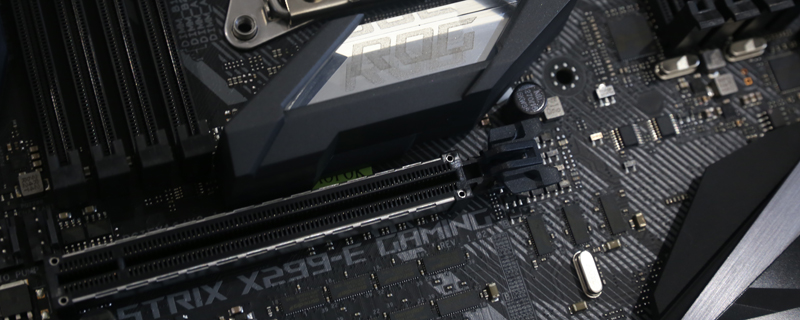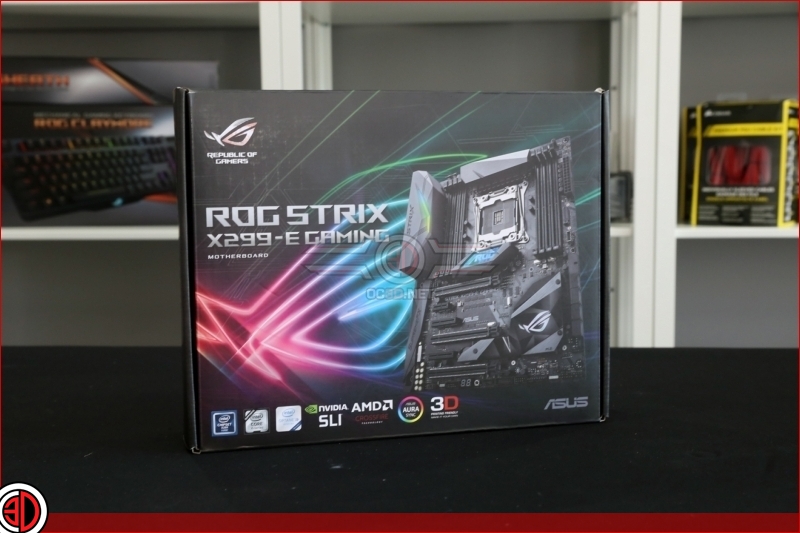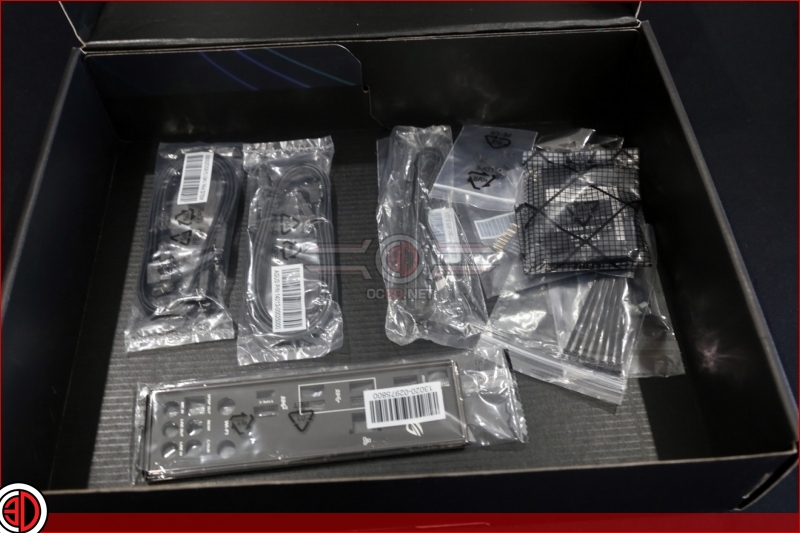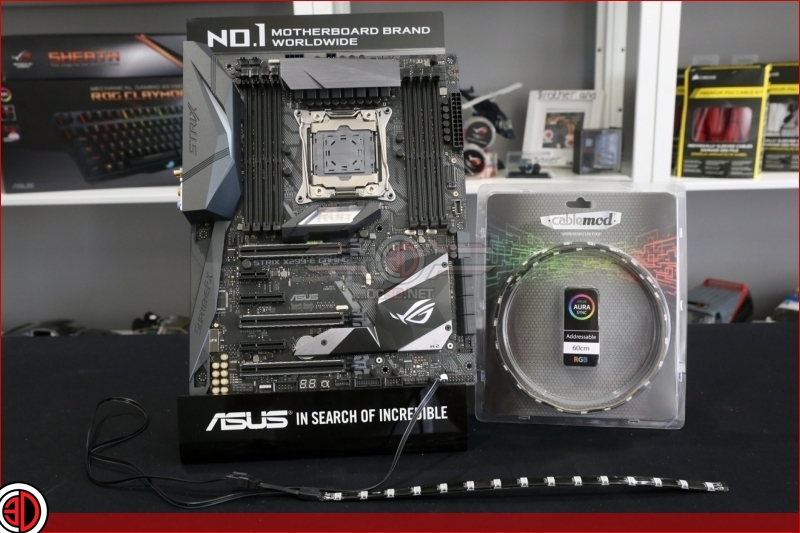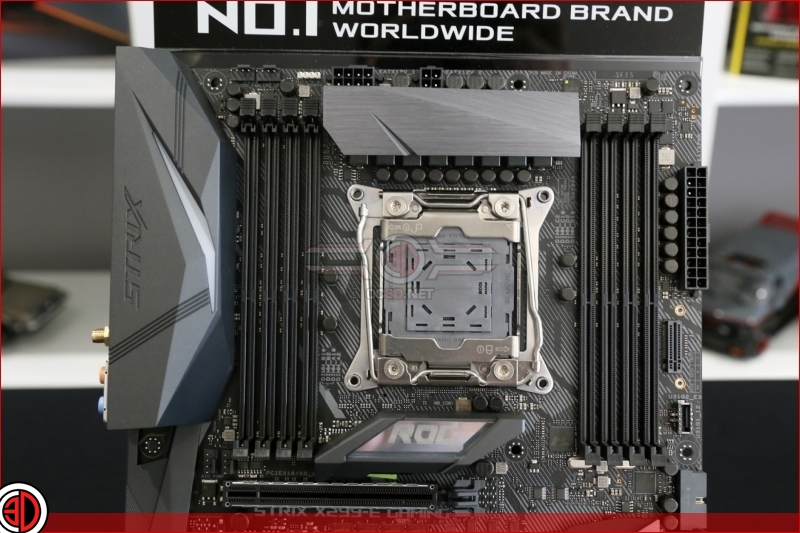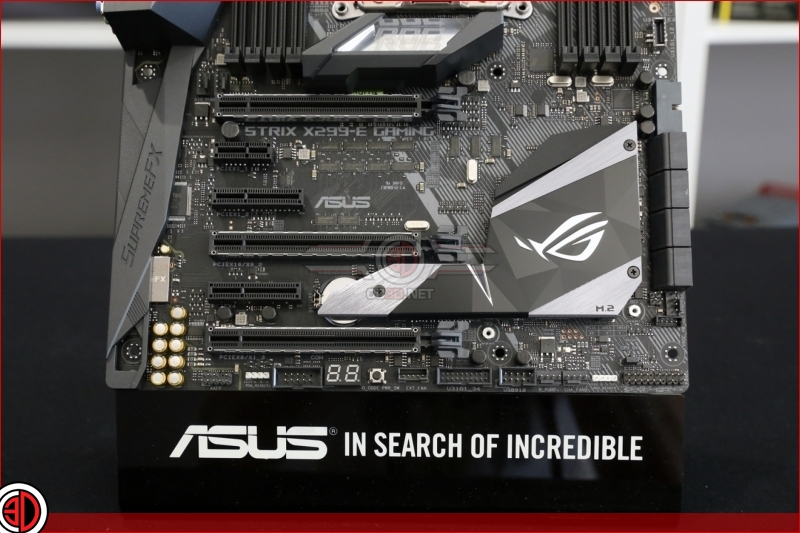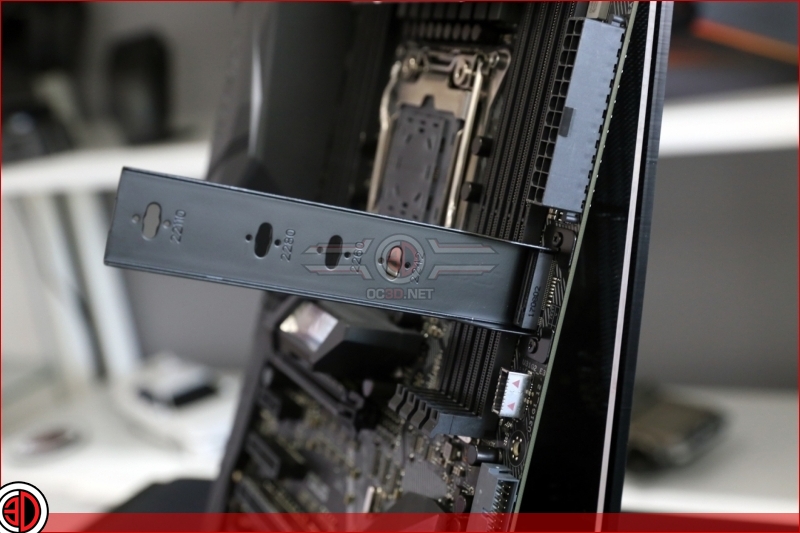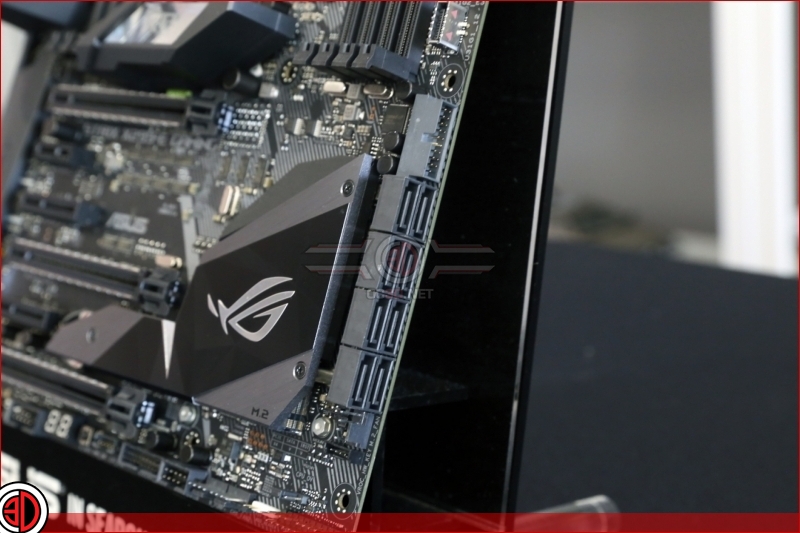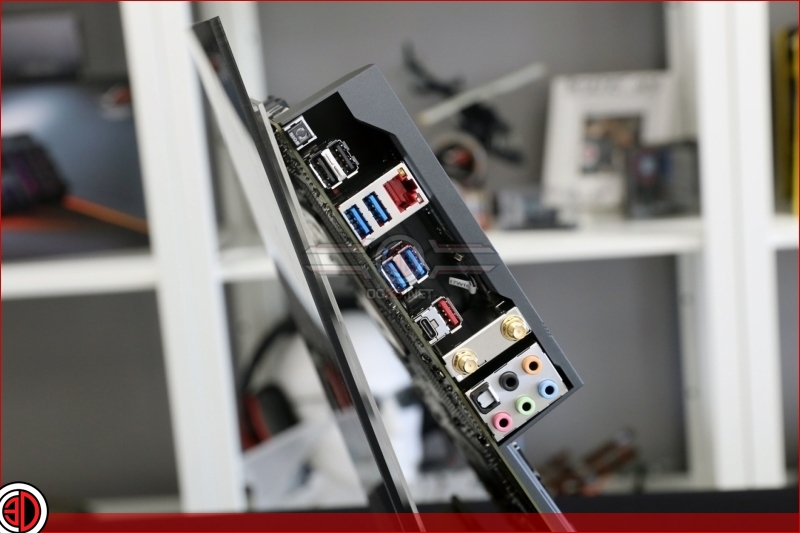ASUS X299-E Strix Gaming Review
Up Close
The Strix in X299 guise has moved from being something that could be mistaken for a Maximus Extreme or similar, towards something that is a little more in the midrange of ASUS products. There are still a goodly amount of accessories, as well as a vertical mount for an M.2 drive should you find yourself managing to have a surfeit of them.
If you checked out our ASUS X299 Prime overview then the X299-E Strix will be incredibly familiar. It’s like the Prime with all the gaming trinkets and trimmings you would expect to find on a more populist motherboard. This is by no means a bad thing as the Prime is a fantastic motherboard. If the aesthetics aren’t for you though, there is the Strix, with the largely black PCB and plastics, slight carbon effect on the PCB too to catch the light from the AURA lighting. Speaking of which the Strix is equipped with an ADD header as well as an RGB one.
We’ve seen a few motherboards equipped with two M.2 sockets before, but usually they have been positioned beside the SATA ports – eight of them here with the Strix – and then either below the PCI Express slot or even sneaked in just above the other. With the Strix though there is one beneath a heatspreader and one that is mounted vertically besides the RAM and ATX power. With a PCB as cramped as the X299, no fault of ASUS, it’s not surprising to find the second M.2 mounted in an alternative location, even if we’d prefer both to be lain flat.
At least ASUS have mounted the M.2 drive facing the intake airflow rather than away. How much heat can affect your transfer speeds is still somewhat nebulous – you’d have to really thrash the drive for a very long time to notice any slowing of rates – but any chance to squeeze another few MB/s has to be applauded. As someone who owns a Predator M.2 drive and looks jealously at the 960 transfer rates, those few megabytes can make all the difference. The X299-E continues the trend of current motherboards in eschewing the SATA Express slots that were such a feature of the Z170 era hardware. Like many things it was a trial that didn’t quite stick. Around the back we have 7 USB ports, split amongst 2.0, 3.0 and 3.1 types, with one extra Type-C USB 3.1 for those of you who are bang up to date.
Â



